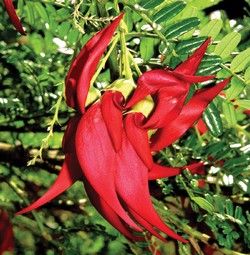Value of biodiversity in planted forests

Ngutukaka, or Kakabeak.
Scion economist Dr Richard Yao says New Zealanders would be willing to pay to see wildlife in pine forests. Planted forests, which include pines and eucalyptus, provide a habitat to over a hundred threatened species in New Zealand. Many of these areas occur next to native forests and help extend the habitat range of some species.
Richard interviewed more than 200 New Zealanders asking which species they valued the most in forests. Bird species such as the North Island brown kiwi and native bush falcon were considered most valuable. The kokopu (a native fish), the green gecko and the endangered flowering kakabeak, less so.
Interviewees were also asked what they would be willing to pay to see or hear these species more often. On average, people were willing to pay $20 and $30 per year to hear kiwi more often in forests or have a greater chance of seeing bush falcons. On average, respondents were willing to pay less to see kokopu, green geckos or kakabeak more often. This is likely a reflection of the extreme rarity of these species and public unfamiliarity with them.
For policy makers and forest owners, these economic valuation studies provide the tools to value production forests for more than just their timber value. Knowing the value of carbon stocks, biodiversity, unique habitats, clean water and recreation helps build a more complete picture of a forest's value.
This research is published in the journal, Ecological Economics.
For further information:
Contact Dr Richard Yao at Show email
